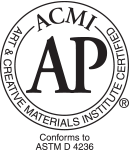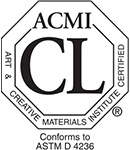Mayco Raku glazes are designed to develop beautiful metallic lusters and crackle patterns when fired according to raku firing processes.
Glazes designed for the mysterious raku process using combustibles and varying firing methods to produce unique finishes. There are several methods and many nuances to raku firing – for our purposes here we define raku firing broadly as the processes of firing an earthenware body and glaze in a kiln, removing the ware from the kiln after it has reached proper temperature, placing it in a container of combustible material and enclosing the container to reduce the oxygen in the container.
From 16th century firing methods in Japan to 20th century reduction methods of the West, Raku firing always reveals exciting and dramatic results.
Shake for 5-6 seconds before use. Stir well. Apply 2-3 coats to bisqueware, 2 coats for RK106 and RK107. Use of a thermal shock-resistant raku clay body will help reduce the incidence of cracking. Do not glaze inside or bottom of the ware. Thinner coats tend to produce greater metallic effects. You can adjust your glaze application if you are not getting the desired metallic results. Allow to dry thoroughly. Fire to cone 06 (1850°F, 1010°C) and hold for 5 minutes. Remove ware from kiln with tongs. If using an electric kiln make sure the power is off, and allow to cool. Minimizing the distance between the kiln and the reduction container can improve the development of metallic colors. Place ware into metal lidded container with combustible materials. Place lid on immediately to reduce oxygen. The combustible materials will produce flames and smoke. Leave in the container until cool, approximately 20 minutes and remove. After ware has completely cooled use water and a scouring pad to clean; cleaning will improve the luster and colors in the fired finish. Actual fired results will vary according to choice of clay.



Raku glazes are CL (Health Caution) with the exception of RK-103 White Crackle, which is AP Non-Toxic. Raku glazes are not recommended for dinnerware due to the durability of the fired glaze. Some glazes, regardless of surface texture or porosity of underlying clay body, will be designated as not suitable for dinnerware as the fired glaze surface is not durable and can be impacted by contact with food or liquids. While it may not be harmful, it is certainly not desirable. Recommended for ornamental use only.
Fundamentals™ Underglazes can be used to put a background color down before burnishing and applying horsehair or feathers in a raku firing.